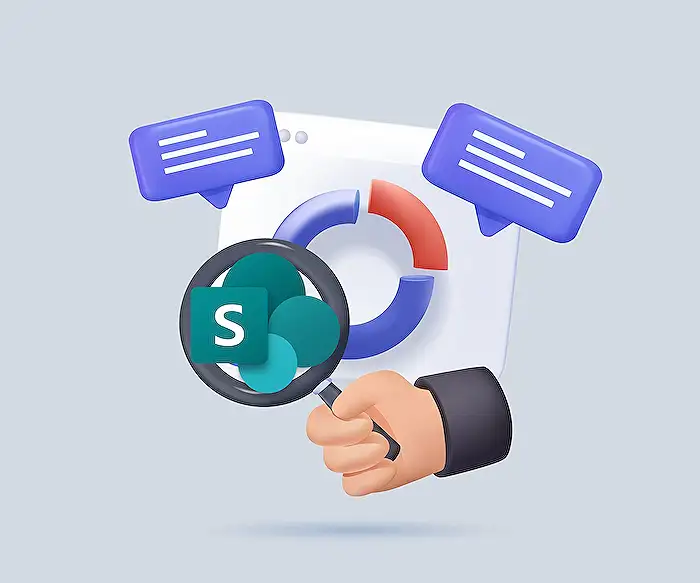- All of Microsoft
Understanding SharePoint: Sites, Web Parts, & Pages
Unlocking SharePoint: Explore Sites, Web Parts & Pages for Optimal Collaboration!
Key insights
- Sites in SharePoint are comprehensive workspaces comprising files, folders, pages, and lists, designed to set specific security measures for unique contents.
- Web Parts are akin to apps on a smartphone, used either to store or portray information, such as news through a News Web Part or events via an Events Web Part.
- Pages serve to display content within a site using various Web Parts. While initial site creation grants one page, additional pages can be created, though setting security on a page level isn't advised.
- Optimal practice for maintaining unique security needs involves setting up a new SharePoint site rather than adjusting individual page settings.
- The fundamental structural elements of SharePoint - Sites, Web Parts, and Pages - each serve distinct roles but collectively contribute to an organized and secure environment.
Understanding SharePoint's Fundamental Components
SharePoint is a versatile platform used by organizations to facilitate collaborative efforts among team members. Its architecture is built around three primary structures: Sites, Web Parts, and Pages. Each component plays a crucial role in site management and information dissemination. Sites act as centralized spaces for storing a varied array of content and come with intrinsic security settings that enhance content management and access governance. Web Parts, on the other hand, are modular and can be likened to customizable applications that display or manage site data dynamically. The flexibility of creating multiple pages within a site allows users to tailor content display based on the specific needs of different team or project requirements. Understanding each element's role and capabilities helps users maximize the platform's efficiency and security features.
Sites vs. Web Parts vs. Pages Overview
Sites, Web Parts, and Pages serve as the three foundational components in SharePoint. A simple comparison is provided to clarify the distinct roles each plays within the SharePoint framework. Understanding these building blocks is crucial for optimal use of SharePoint Online.
Understanding Sites
In SharePoint Online, sites act as centralized workspaces where content is stored and managed. This content ranges from files and folders to pages and lists. Sites are also crucial for setting security measures. Whenever unique security settings are applied, creating a new site is strongly advised to ensure optimal content management and safety.
Role of Web Parts
Web Parts in SharePoint are akin to apps on a smartphone. They are designed to either store or present information. For instance, there's a Web Part available for news that helps display news and announcements, and another called Events, which manages the display of a calendar of events. This modular approach simplifies content management and enhances user interface experience.
Functionality of Pages
Pages in SharePoint are surfaces where content, managed in Web Parts, is displayed. Upon creating a site, a default page is available but additional pages can be added. Though it's possible to control security at the page level, the standard practice is to manage security at the site level for more effective control and to avoid complications.
Comprehensive Review of SharePoint Online Structures
Understanding the distinctions among Sites, Web Parts, and Pages in SharePoint Online is essential for anyone using the platform. Sites provide a secure, customized environment where content is stored and handled. Web Parts enhance site functionality by providing specialized tools for showcasing specific types of content like news or calendar events. Meanwhile, Pages offer a visual layer where the assembled components from Sites and Web Parts are displayed. Efficient use of these components ensures a seamless and productive experience in SharePoint Online, aligning both structure and functionality with organizational needs.
ToDo & Planner

People also ask
"What are SharePoint sites pages and web parts?"
In SharePoint terminology, 'sites' refer to distinct areas within SharePoint designed for specific teams or projects; each site can contain multiple pages. Pages within these sites serve as canvases where various types of content are displayed and organized, allowing customization to reflect the needs and preferences of the users or team. 'Web parts' are components that can be added to these pages to display content, or assist with functionality on a SharePoint site, such as displaying a list, library, or custom data from other sources.
"What is the difference between a website and a page?"
A 'website' is typically a complete environment with its own URL and host of web pages, linked by navigation and driven by a common purpose or theme. In contrast, a 'page' is an individual component within a website; it is typically a single document that provides specific information which fits into the broader context of the website.
"What is the difference between site and site page?"
The term 'site' refers to a dedicated section within SharePoint intended for a distinct purpose or team, comprising multiple elements like libraries, lists, and pages. A 'site page' is one element within a site, designed to display content or information pertinent to users of that site. It’s a specific page in SharePoint which is part of the larger site’s structure.
"What is the difference between a Web part page and a wiki page?"
'Web part pages' in SharePoint are designed for functionality, supporting the use of web parts which add different functionalities to a designated space within a SharePoint site. They are typically used to build complex pages involving data, content from other applications, and services. On the other hand, 'wiki pages' are simpler, geared more towards content creation and collaboration. They allow multiple users to add, modify, or delete content easily, making them ideal for knowledge sharing and management within teams.
Keywords
Sites vs Web Parts vs Pages comparison, SharePoint Sites, SharePoint Web Parts, SharePoint Pages, Difference between Sites Pages Web Parts, SharePoint architecture, SharePoint components, SharePoint setup guide
